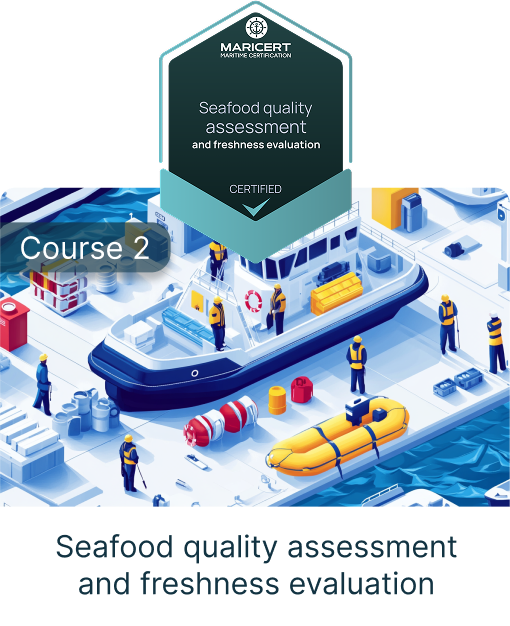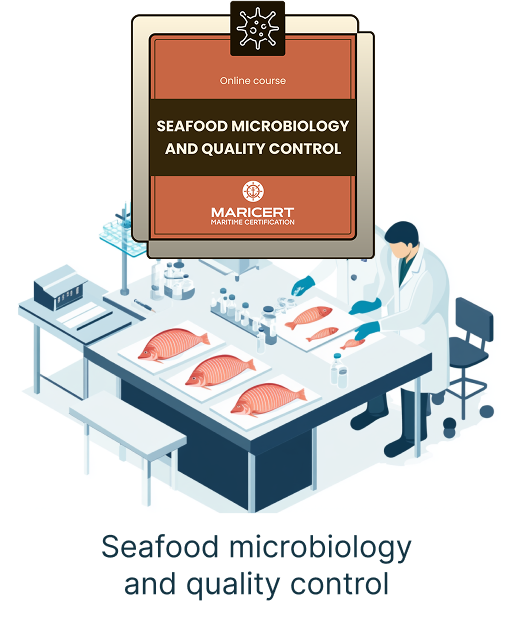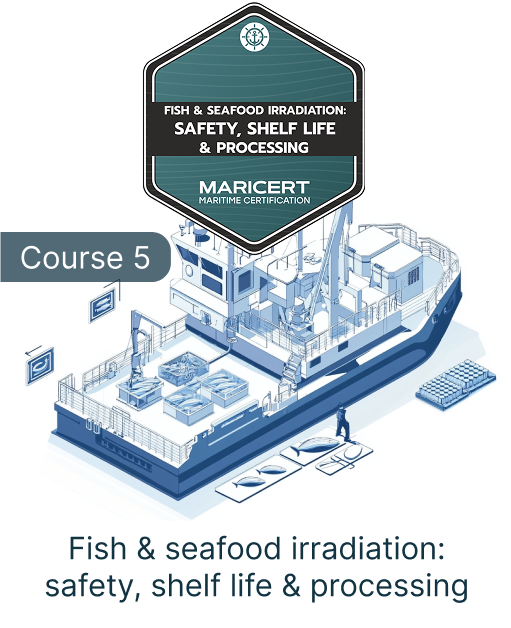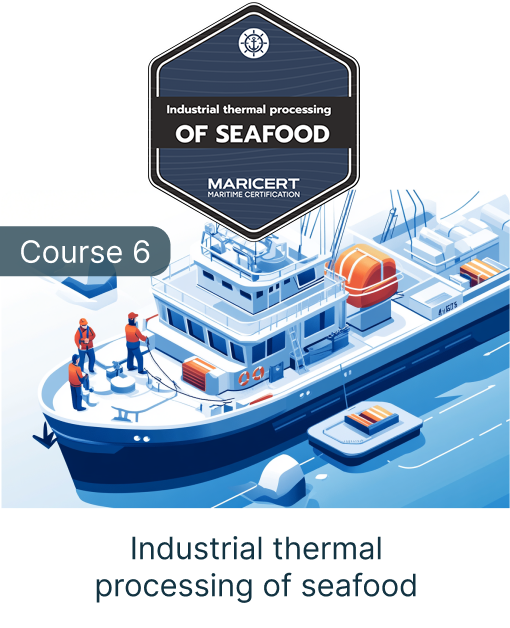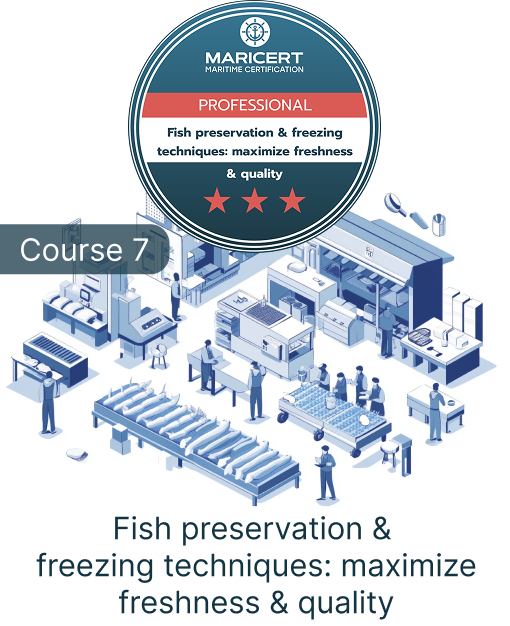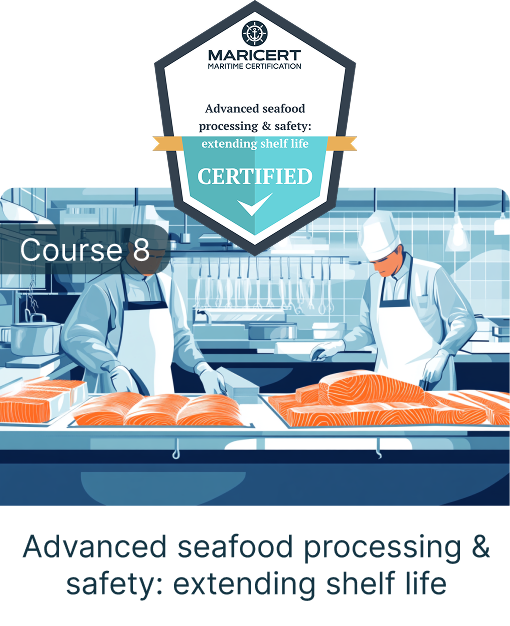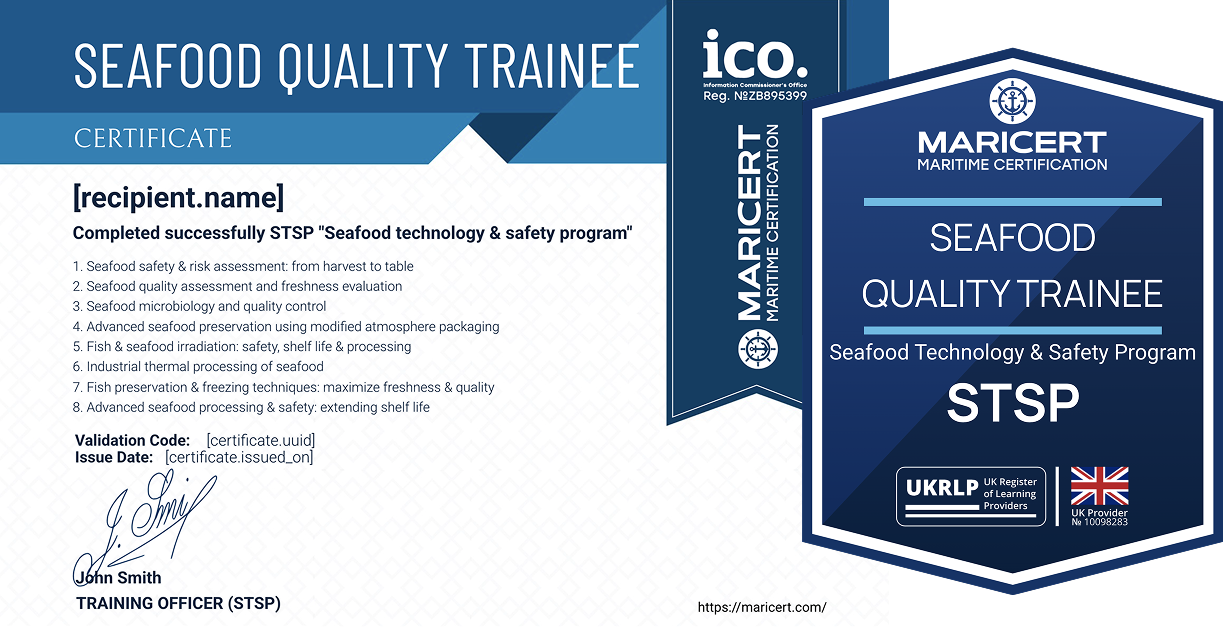Seafood microbiology and quality control
LESSONS
- Glossary
- Microbiological control in seafood
- Microbiological profile of seafood
- Pathogenic risks in seafood
- Culture-based methods in seafood microbiology
- Spoilage bacteria identification in seafood
- Hygiene indicators in seafood monitoring
- Pathogen detection in seafood
- Rapid indirect methods in seafood microbiology
- Microscopy-based methods in seafood testing
- Molecular tools in seafood microbiology
- Molecular detection and quantification in seafood safety
- References
- Test
- Certificate
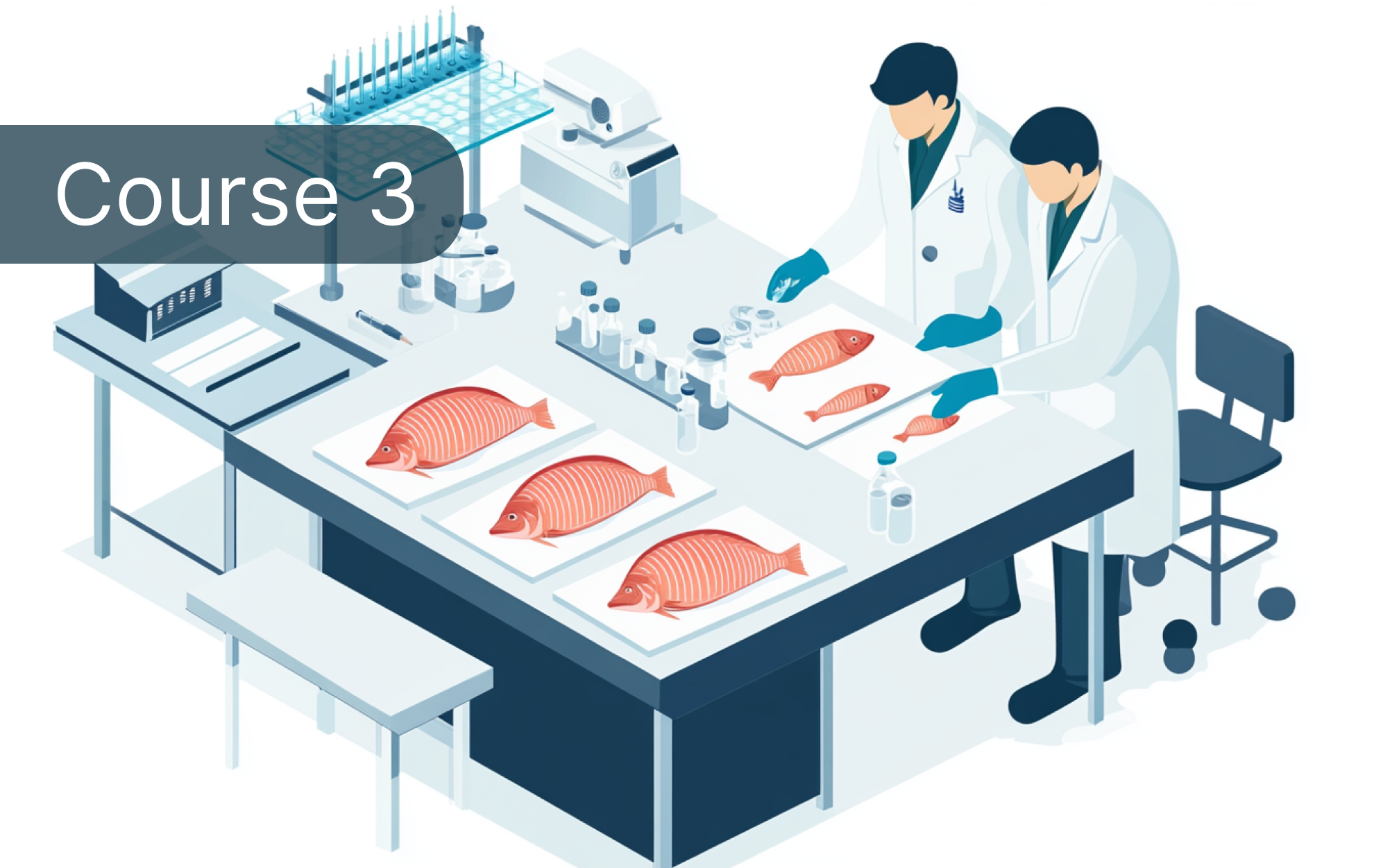
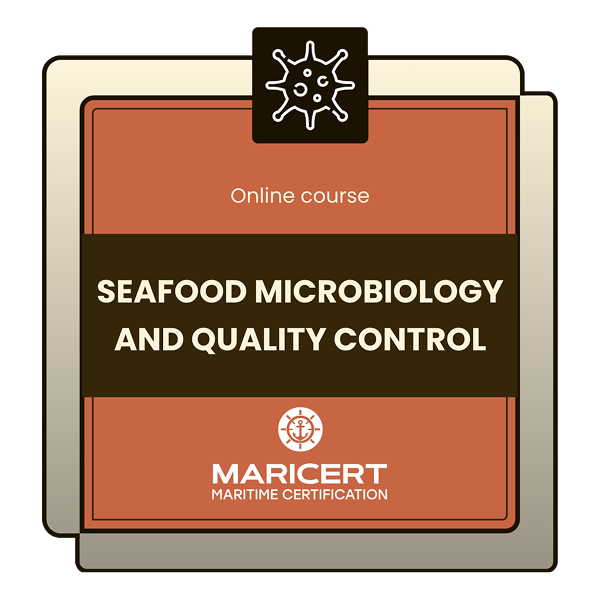
Duration
7–9 hours for studying the theoretical material, 2 hours for completing the final test.
Certificate
Upon successful completion of the online course, you will receive a certificate titled:
"Advanced Seafood Processing & Safety: Extending Shelf Life".
lifetime certificate.
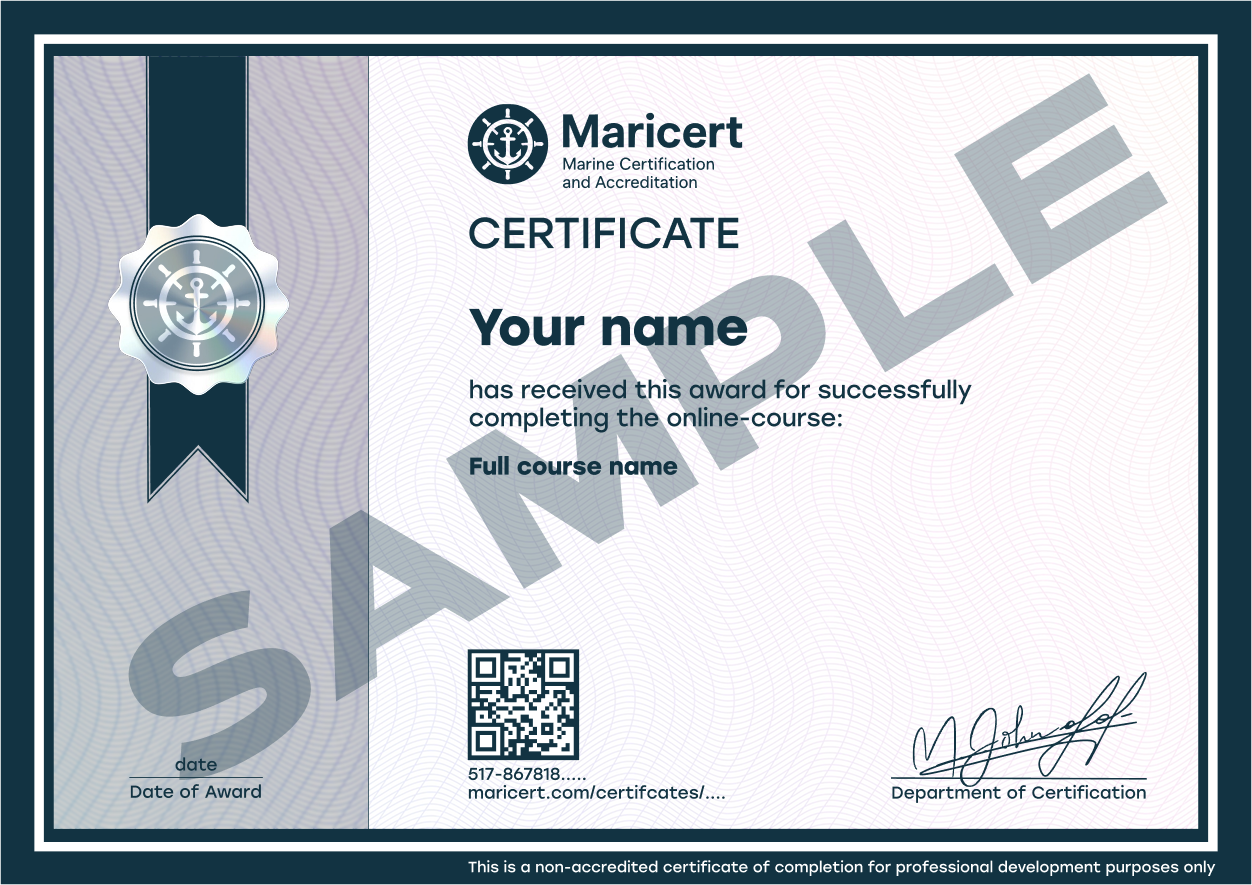

SEAFOOD TECHNOLOGY AND SAFETY PROGRAM
This course is part of the Seafood Technology and Safety Program (STSP). After completing all courses in the program, you’ll be eligible to receive the Seafood Quality Trainee Certificate, officially registered in our verification database. You can share it on social media or add it to your CV to increase your chances of getting hired in the seafood industry — including сrab and fishing fleets, seafood factories, and more.
Course description
This course provides a comprehensive overview of microbiological safety and quality control practices in seafood. You’ll explore how microorganisms influence the spoilage, shelf life, and safety of fish and shellfish. The curriculum covers native and contaminant microbiota, specific spoilage organisms (SSOs), foodborne pathogens, and hygiene indicators. Emphasis is placed on conventional culture-based techniques as well as modern rapid, molecular, and microscopy-based methods. You will learn how to detect, identify, and quantify key microbial threats using PCR, qPCR, ELISA, ATP bioluminescence, and more. The course also examines microbial risks in different seafood types and storage conditions, including ready-to-eat, raw, and minimally processed products. Special focus is given to understanding environmental and processing factors that influence microbial growth, as well as to current international standards and safety limits. This course equips professionals with practical tools for implementing microbiological controls in seafood production, inspection, and research.
What you’ll learn
- Principles of microbial contamination and spoilage in seafood
- Identification and roles of specific spoilage organisms (SSOs)
- Detection of foodborne pathogens in fish and shellfish
- Culture-based, molecular, and rapid microbiological methods
- Use of hygiene indicators like Enterobacteriaceae and E. coli
- Application of PCR, qPCR, ELISA, and ATP-based techniques
- Microbiological criteria for various seafood product types
- Factors affecting microbial growth during storage and processing
Who this course is for
- professionals in seafood processing and food safety
- quality assurance managers and laboratory technicians
- microbiologists and public health inspectors
- food technologists and regulatory personnel
- researchers studying seafood microbiology and shelf life
- students and graduates in food science, microbiology, or aquaculture
- anyone responsible for seafood safety, hygiene, or compliance
FAQ
First, please check your spam or promotions folder — sometimes emails land there. If you still don’t see anything, contact us at https://maricert.com/contact/ — we’ll check your order and grant access as soon as possible.
You can retake the test as many times as needed. There are no penalties or additional fees.
Yes. All lessons and tests are in written format. You can use Google Chrome with auto-translation or third-party tools. Our goal is to make learning accessible to everyone.
Absolutely. The platform is fully optimised for mobile. You can study from your phone, tablet, or laptop — whichever is most convenient for you.
You get 12 months of access from the date of purchase. You can study at your own pace. If the course isn’t completed within that period, access will be revoked without a refund. Refunds are not available once access is granted, as digital content is considered delivered in full (as per the UK Consumer Contracts Regulations 2013).
Your certificate will be sent to your email and also registered in the Certifier.io verification database. You'll receive a PDF version that you can attach to your CV.
Each certificate includes a unique ID and QR code. Employers can verify authenticity via the Certifier database or directly through the Maricert website.
Yes. We recommend including a direct Certifier.io link in your CV, cover letter, or LinkedIn profile to help build trust with employers.
No. Our courses are open to everyone, including beginners. You don’t need any maritime documents to enrol.
They can be added to your CV when applying for jobs on crabbing vessels, fishing fleets, seafood factories, and maritime logistics companies. They’re especially valuable for those with no prior experience.
Yes. While our certificates don’t guarantee a visa, they can serve as additional proof of qualifications when applying for seasonal or work visas.
We are not a recruitment agency, but our certificates and diplomas can improve your chances when applying directly to employers — especially if you’re new to the industry.
Yes. Maricert is officially registered in the UK Register of Learning Providers (UKPRN: 10098283) and complies with ICO (Information Commissioner's Office) data protection regulations.
Yes. You can purchase a course using another person’s email address or contact support to have access transferred after the purchase.


